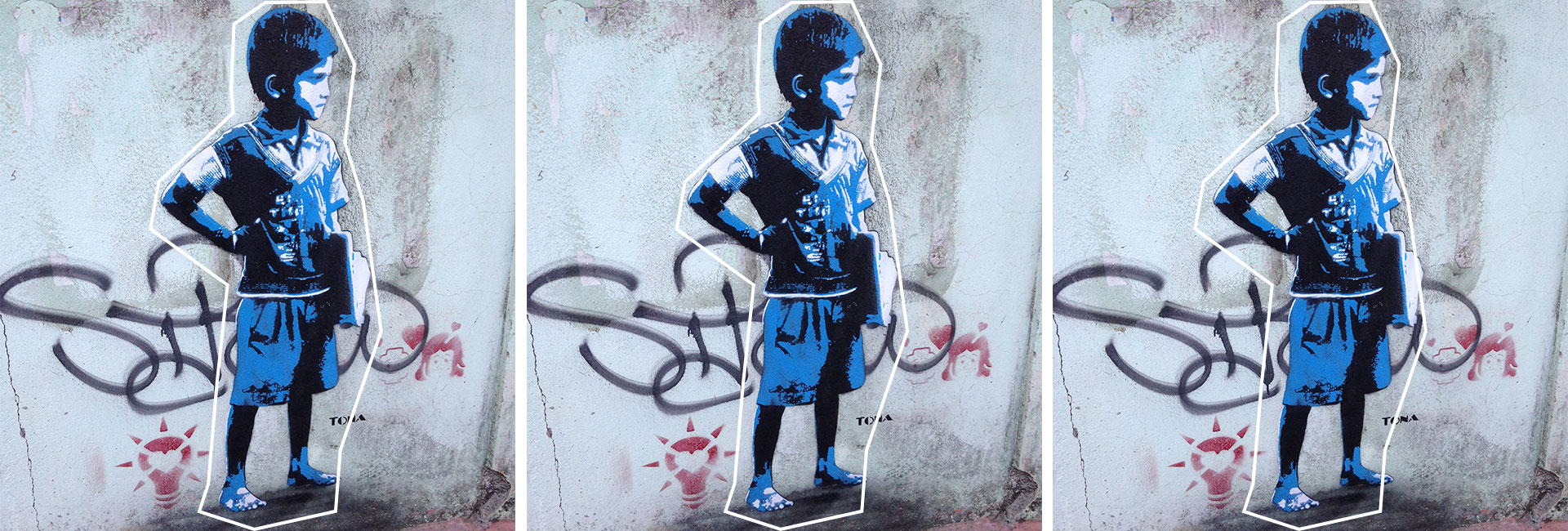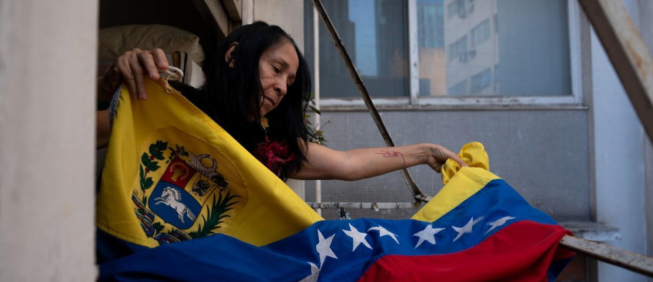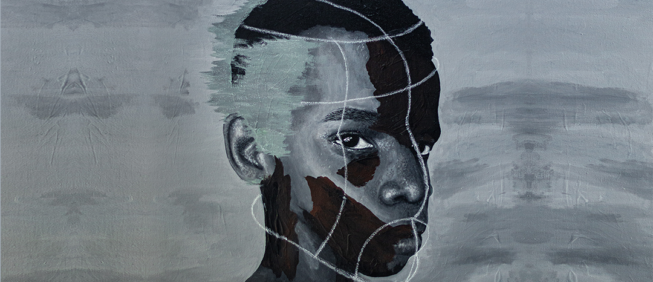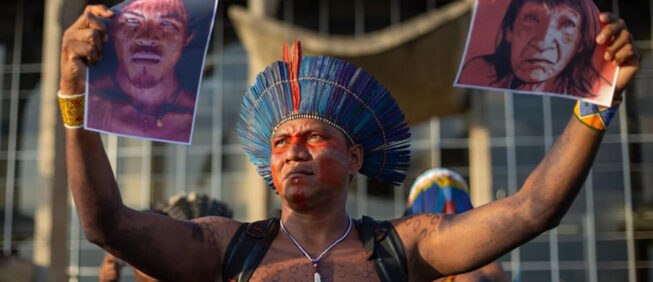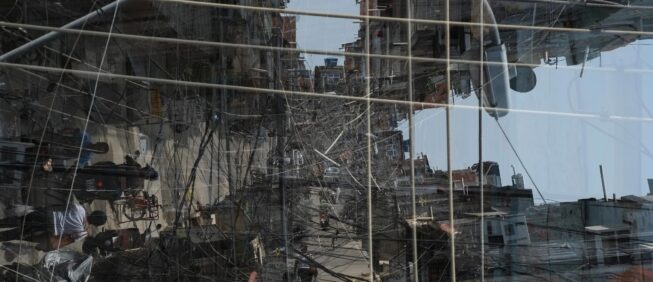The public school education system and subalternality in India
Shruti Ambast
| India |
20 de December de 2019
Background
Among institutional spaces where peripheral or subalternate communities represent a majority in India, public schools are significant. However, this was not always the case. Public schools have undergone a considerable change in character over the last three decades. Until the 1980s, public schools were the preserve of the middle and upper classes, catering to children of bureaucrats, politicians and other elite groups. Starting from the early 90s, India witnessed a strong drive towards the universalisation of elementary education. This was anchored first in the World Bank-funded District Primary Education Programme (DPEP), followed by the Indian Government’s Sarva Shiksha Abhiyan (SSA). The enactment of the Right to Education Act (RTE Act) in 2009 introduced statutory provisions guaranteeing free and compulsory education to all children between the ages of 6-14, along with a concomitant set of guarantees relating to access and quality in education. With the help of these policy measures, gross enrolment at the primary school stage became nearly universal. In 2005, the Indian Human Development Survey showed that school enrolment for every social group in India was higher than 90%.
Concurrently, elite groups began to pull out of public schools, shifting to private schools, which were perceived to deliver better educational outcomes. Along with private schools that catered to the elite, a new class of affordable or ‘budget’ private schools also began to proliferate. These schools marketed themselves effectively, with the teaching of English prominently featured. The thought that anyone who can afford to send their child to a private school will do so became a common refrain. As a result, public schools now cater overwhelmingly to those who cannot afford an alternative – the poor, and socially disadvantaged groups.
In this situation, it is pertinent to examine the state of public school education in India with a view of systemic factors that influence the composition of their student bodies. This calls into question whom the public school system is serving, with what aims, and how it is mobilising and distributing resources towards meeting said aims.
Recent Trends in Public School Education
Even as enrolment has improved, child labour continues to be a challenge. In 2014, Human Rights Watch reported that 13 million children in India were working and not going to school, and the majority among were children belonging to Dalit, Adivasi and minority communities. Further, enrolment in public schools has not shown a positive trend in recent years. By one set of recent estimates, 40 percent of public schools in Indian are functioning with less than 50 students, while 10 percent have fewer than 20 students. In response, many states are carrying out consolidation or mergers of schools in large numbers. However, these exercises are often conducted carelessly, without due consideration to factors such as physical distance of schools from children’s residences. In Bengaluru, where many public schools are functioning as ‘zero enrolment schools’, the state government’s efforts to attract children with incentives like free meals and bicycles have not worked.
These trends reflect widespread perceptions that public schools do not provide quality education. Such perceptions are ostensibly reinforced by several points of evidence. Public schools have become notorious for poor infrastructure and underqualified or absentee teachers, despite provisions in the RTE Act guarding against the same. The legislation, while well-intentioned, has been found to be lacking in terms of both design and implementation. A recent review of nationally representative datasets reveals that school-going has risen after the RTE Act was passed. Test scores have declined, however, in both public and private schools, and the decline is slightly larger in public schools. There has been no discernible effect on infrastructure or Pupil-Teacher Ratio, although the education level of teachers has increased.
The Annual Status of Education report (ASER report), which presents nationally representative data on reading and arithmetic abilities of children enrolled in elementary school (classes I-VIII), has consistently shown worryingly high learning deficits in the last decade. While high deficits are also registered among children in private schools, public school students fare worse. For instance, in 2018, only 40% of class VIII students in public schools could do simple division, compared to 54.2% of private school students.
These differences can be attributed to selection bias; students in public schools are likely to have socioeconomic backgrounds less conducive to educational attainment. Parental education has a significant effect on learning: it has been found that children whose parents have completed their school-leaving exams had a higher probability of performing well on reading, writing and arithmetic (Borooah, 2012). Similarly, children belonging to poor households were less likely to do well on all three competencies. The flight of elite groups to private schools has also eroded accountability in public schools, with government officials and political leaders no longer having personal stakes in their performance. Even public school teachers and administrators prefer to educate their children in private schools, indicating their lack of trust in the system. Parents of children who do study there are likely to be uneducated and working class, and rarely have the time, resources or knowhow to engage with the school and demand quality education.
Meanwhile, class and caste differences between teachers and students often create a hostile environment, resulting in apathy, exclusion and even violence. Teacher attitudes towards students are frequently found to be prejudiced. A 2017 report by the National Dalit Movement for Justice and the Centre for Social Equity and Inclusion, found that Dalit children are facing severe discrimination in schools, such as being made to sit separately, along with other forms of abuse and humiliation. In 2016, a teacher in a public school in Nangloi, Delhi was allegedly killed by his students. A degree of violence among adolescent boys in public schools appears to have become normalised. An explanation for this may be students’ frustration with the poor conditions and outcomes in schools, manifesting as rage.
The discourse around ‘quality’ of education has been critiqued by many as narrow, with a misplaced emphasis on test scores, as opposed to overall equality of educational opportunity (Mehendale, 2014). Some other aspects of quality, such as autonomy of the student and teacher, capacity building for equality and achieving social goals of education, do not figure prominently in mainstream discourse. Another dimension to the notion of quality is comparability, where it can be argued that public schools should not be judged on the same parameters as a private school, as the aims of public school education are distinct. If public schools are understood as being instruments of social change, measures of quality cannot be restricted to infrastructure, teacher accountability and individual test scores. The unit of quality is also in question – whether it is a school or the education system as a whole that must be assessed to judge quality (Sarangapani, 2010). The need to redefine quality is underscored in the instances of neglect, apathy and exclusion outlined above.
Socioeconomic Background and Learning Outcomes
There is a plethora of evidence to show that learning outcomes are strongly correlated with a student’s socioeconomic background. This has serious implications for both the processes and pedagogies employed in public schools. An analysis of IHDS data shows that the test scores of children between the ages of 8-11 on reading, writing and arithmetic varied significantly by social group (Borooah, 2012). Scores were found to be highest for Brahmins, ‘high castes’, Sikhs/Jains, and Christian, and lowest for Dalits, Other Backward Classes (OBCs), Adivasis and Muslims. On the other hand, there was very little difference in the average scores of boys and girls. One explanation offered for the variance is that children belonging to advantaged groups were more likely to be attending private schools. These children were also more likely to be educated in English, and to be paying more fees. Public schools were found to be limited in several ways; for instance, 71% of public schools did not have desks and chairs for students, and they also had the lowest attendance rates. Notably, more inequality was found between test scores of children from different disadvantaged social groups. This indicates that the learning needs of different groups must be carefully identified and incorporated into classroom transactions in the school.
When it comes to factors influencing test scores, parental education and the economic position of the household were found to exert significant influence, as discussed above. Further, the effect of a lack of wealth, measured in terms of household assets, was found to be less than the effect of poverty, or a lack of income. Advantages were also seen in studying in English, Hindi or another state language, as compared to studying in Urdu or another language. Other factors found to have positive but small effects on learning were homework, private tuition and regular attendance. Children in urban areas were likely to do better than those in rural areas. Even after controlling for other factors that affect educational attainment, Dalit children performed worse than Brahmin children, pointing to pervasive structural difference between social groups. These structural differences were quantified through gaps between Brahmin and Dalit children, at 24, 36 and 28 percent in reading, arithmetic and writing respectively.
Discrimination and Social Exclusion
Subaltern children routinely face discrimination, exclusion, harassment and violence in schools. A community survey of 16 public schools in Lucknow district, Uttar Pradesh found that a staggering 62.50% of students had perceived discrimination on the basis of caste, religion or gender (Malik, 2015). It also found that provisions of the RTE Act were not being followed in most schools. 89% of schools did not have a School Management Committee (SMC) in place. 44% of the schools did not have separate toilets for girls, 60% did not comply with the stipulated Pupil Teacher Ratio, and 28% did not have a playground. Uttar Pradesh has a high population of Dalits, OBCs and Muslims. The poor state of RTE implementation therefore reflects the sub-par conditions in which most marginalised children study. This suggests that not only do marginalised children face discrimination within their schools, the institutions they belong to are also systematically excluded from opportunities for quality education. There is also inter-state disparity at play here, with states like Uttar Pradesh continuing to be on the lower end of the development ladder.
Similar insights were revealed by a qualitative study from 2011-12 covering 120 public schools in six states, which are summarised below (Ramachandran and Naorem, 2013). Certain disparities were found among different disadvatanged groups; Dalit children were more likely to face discrimination than adivasi children, except with respect to certain groups of Adivasis who were identified as more vulnerable (Bhil and Sahariya communities in Rajasthan). One proferred explanation for this phenomenon was that Dalit families are more likely to be minorities in a given location, whereas Adivasi families tend to live in by themselves in exclusive communities. The larger social context, including residential patterns, therefore affects the levels of discrimination within schools. In another instance of this phenomena, regional politics also wield a strong influence over exclusionary practices. States which have seen greater social mobilisation among Dalits and OBCs, like Bihar and Andhra Pradesh, had fewer instances of caste-based discrimination, than those where such mobilisation has not taken place, like Rajasthan.
Another significant site of exclusion is language. Language-based discrimination can be precipitated by a difference between the mother tongue of the student, and the teacher’s language or the official state language. The study found that tribal children in Odisha’s coastal districts faced difficulties in learning, as Odiya was used in books and for classroom transactions. In this situation, language also becomes a caste marker, possibly leading to more discrimination. Children of Hindi-speaking tea workers in Assam faced issues as Assamese was used in their schools. Children who spoke local dialects in Rajasthan struggled with the standardised Hindi used in schools.
The study identified the Mid-day Meal (MDM) served in public schools as the most important site of exclusion Caste prejudices affect who actually eats the MDM and who cooks it, along with the seating arrangement. Children from better-off families did not avail the MDM, in all six states. The social composition of children who eat and do not eat MDM varied from state to state. Instances were recorded where children from extremely poor tribal communities in Andhra Pradesh did not eat food cooked by a backward or forward caste person; forward caste children in Assam went home during the MDM; children from several caste communities in Rajasthan did not eat MDM and children from the Meena community in Rajasthan only ate if the cook was from their community.
Notably, the perceptions of teachers regarding children from Dalit and Adivasi communities were negative, and removed from reality. Many teachers felt that children from these communities did not perform well at school, despite the fact that many such children had good academic records. In all states, teachers were found to focus only on the ‘bright’ children who sit in the front row. Children from subaltern communities recorded poor attendance, which may be attributed to a variety of causes such as poor health, parental absence for daily wage labour, responsibility of household chores and others. As a result they were unable to keep up with the pace of learning, and teachers did not help them catch up. This suggests that discrimination need not always be overt; regular attendance affects teacher perceptions about ‘bright’ and ‘dull’ students, and ‘bright’ students are given prestigious responsibilities, and paid more attention by teachers. Some perceptions were also recorded on gender roles; teachers felt that girls were not interested in sports, and that they should learn household duties.
It may be noted, finally, that hardly any of the schools had any Children with Special Needs (CWSN) enrolled, suggesting that such children are being systematically excluded from accessing schools altogether. Lack of disabled-friendly infrastructure and negative attitudes of teachers appear to be some attendant problems.
Some positive practices were also recorded. In two schools, it was found that teachers made efforts to reach out to all children for academic activities, regardless of socioeconomic background. A few instances were found where a motivated headmaster was successful in making the school more inclusive and egalitarian. One school in Andhra Pradesh had no discrimination in seating arrangements and its teachers paid equal attention to all students. In 30% of schools in Odisha, MDM was managed by women self-help groups, who ensured hygiene and quality, which led to greater participation of children in the MDM. Finally, some schools with more active SMCs, and good infrastructure showed better and more inclusive classroom transactions. It thus appears that wherever positive changes are visible, they are engendered by individual or local initiatives, while the state-run system as a whole is failing to deliver on equitable outcomes.
Models of transformation
With widespread recognition of the poor condition of public schools, both the Centre and States have been compelled to take measures for transformation. A few initiatives are discussed here, to illustrate the different approaches towards improving access to quality education, and specific challenges presented by the social composition of public schools.
Some initiatives of the Bihar government appear to have improved inclusiveness in public schools in the state (Ramachandran and Naorem, 2013). Under the tola sewak programme, a local volunteer accompanied children to school and interacted with them. The volunteer also intervened to guard children against discriminatory practices. Another progamme in Bihar called Hunar, works for the empowerment of Muslim girls. The girls in this programme have benefited in terms of confidence and outlook towards education.
Karnataka’s Nali Kali or ‘Joyful Learning’ programme, initiated in 1995 in Mysore district and since expanded to all districts in the State, has drawn considerable attention among educationists and policymakers. This programme was launched at a time when there was growing emphasis on child-centered learning in policy discourse, and the prevalent approach of textbook-focused rote learning was under severe scrutiny. The programme sought to reshape the hierarchical relationship between teachers and students, by incorporating songs, games, toys and storytelling into traditional classroom teaching. It was targeted mainly at children between the ages of 6-9, in rural public schools. Select teachers in the schools were trained in activity-based teaching methods. With the help of these methods, students moved from one competency to the next, as they mastered each one, and eventually reached a stage of self-learning.
There is evidence to suggest that the programme had a positive effect on learning outcomes of students in the target schools (Raj et al, 2015). It was found that student performance (based on test scores in Kannada and Mathematics) improved with the duration of implementation of Nali Kali in the school. This indicated that teachers master the techniques of the programme over time and are able to deliver better results. Performance also improved with a rise in the share of Nali Kali trained teachers in a school. However, the programme faced barriers in scaling up, such as high levels of teacher workload and challenges of implementation in classrooms with more than 30 students.
More recently, the education policy of the Delhi government has become drawn both national and international attention. The Aam Aadmi Party (AAP), since coming to power in the State in 2015, has instituted wide-ranging changes to improve the condition of public schools. These include a significant increase in the proportion of the budget allocated towards education, the construction of 8000 new classrooms and upgradation of infrastructure in select schools, improved exposure and training for teachers, and the revival of SMCs. These measures have yielded some visible results. In 2018, the pass percentage in public schools for the India-wide Class 12 board exams was 90.68 percent, compared to 88.35 percent in private institutions (Hindustan Times, 2019).
In July 2018, the Delhi government launched a ‘Happiness Curriculum’ for students in Nursery to Class 8, involving mental exercises, meditation and moral values, with the aim of equipping children to be ‘good human beings’ and overcome negative emotions. According to the government, the curriculum has been successful, and has made students more positive, emotionally stable, helpful towards their peers and has even reduced truancy.
However, the performance of Delhi schools on some indicators has languished. A survey in 2018 by a non-profit found that 23 percent of children between the ages of 11-15 years in Delhi were dropouts. More recently, it was observed that 77% of ad hoc teachers in Delhi’s public schools did not meet the minimum qualifications needed for permanent recruitment, indicating that the quality of teaching remains suspect. Moreover, almost one third of the teaching staff was composed of contractual and guest teachers, and a large number of posts were vacant.
One programme of the AAP government that has drawn criticism from experts is Chunauti 2018, under which students are placed in one of three groups based on learning ability, and each group is taught separately using customised textbooks. Experts contend that such segregation could damage the students’ self-esteem, while also limiting the social diversity of the classroom. Moreover, the group with low learning levels were found to be overwhelmingly composed of children from Muslim, SC and ST communities. Segregation could end up further alienating them from the mainstream.
The Future of Public School Education
The success and limitations of the initiatives discussed above reveals that while several interventions with proven effectiveness can be deployed, there is a need for better planning and resources for scaling up, as well as complementary reforms in systemic factors such as quality of teacher education, Pupil Teacher Ratio, and school infrastructure. Moreover, special care is required while devising programmes for first-generation learners from subaltern communities. Pedagogically sound reforms may not be effective without accounting for social structures, and dominant modes of knowledge transfer. It has been theorised that child-centred education need not directly lead to educational development, as the process is mediated by existing pedagogical and social practices (Sriprakash, 2011). Importantly, for schooling to be truly egalitarian, teachers and administrators need to be sensitised to critically question the entrenched social order of Indian society, including class, caste, gender and regional relations.
Recently announced schemes in Andhra Pradesh have created some hope in this direction. One of the schemes entails converting all government schools to English-medium, with Telugu (the state language) remaining a compulsory subject. A second scheme, Amma Vodi or Mother’s Lap, will provide a cash grant for educational expenses to all mothers from poor families with school-going children. This approach has been lauded as one that can change the underlying structures of school education, with important implications for the market as well. It is commonly recognised among education activists that an English-medium education can empower children from subaltern communities and enable them to break out of their socioeconomic contexts, connect to global knowledge systems and strengthen democratic processes in society.
Besides state-funded programmes, several groups and coalitions in the country are regularly organising for egalitarian outcomes in education. The National Dalit Movement for Justice and its allies across states have been organising against caste-based discrimination in schools. Another prominent initiative is the Right to Education Forum, which is a nationwide coalition of 10,000 organisations, including many prominent educationists. The Forum was brought into being after the RTE Act was passed in 2009, to advocate its proper implementation and demand equitable, quality education for all. The success of these initiatives can help unlock and manifest the inherent potential of public school education towards a more democratic and egalitarian society.
Malik (2015). RTE and Marginal Communities: A Perspective from the Field. Economic and Political Weekly, Vol l No. 5
Manikanta and Lal (2017). Exclusion in Schools: A Study on Practice of Discrimination and Violence. National Dalit Movement for Justice (NDMJ): New Delhi.
Mehendale (2014). The Question of “Quality” in Education: Does the RTE Act Provide an Answer? Journal of International Cooperation in Education, Vol.16 No.2 (2014) pp.87-103.
Raj et al (2015). Joyful learning? The effects of a school intervention on learning outcomes in Karnataka. International Journal of Educational Development, 40: 183-195, DOI: http://dx.doi.org/10.1016/j.ijedudev.2014.09.003
Ramachandran and Naorem (2013). What It Means To Be a Dalit or Tribal Child in Our Schools: A Synthesis of a Six-State Qualitative Study. Economic and Political Weekly, Vol XLVIII No. 44 43
Sarangapani, P. (2010). Notes on Quality in Education. (Unpublished paper) presented at Workshop on Quality in Education on December 17-18. Mumbai: Tata Institute of Social Sciences.
Sriprakash A. (2012). Child-Centred Pedagogies and the Promise of Democratic Schooling. In: Pedagogies for Development. Education in the Asia-Pacific Region: Issues, Concerns and Prospects, vol 16. Springer, Dordrecht
Vani K. Borooah (2012). Social Identity and Educational Attainment: The Role of Caste and Religion in Explaining Differences between Children in India. The Journal of Development Studies. 48:7, 887-903, DOI: 10.1080/00220388.2011.621945
